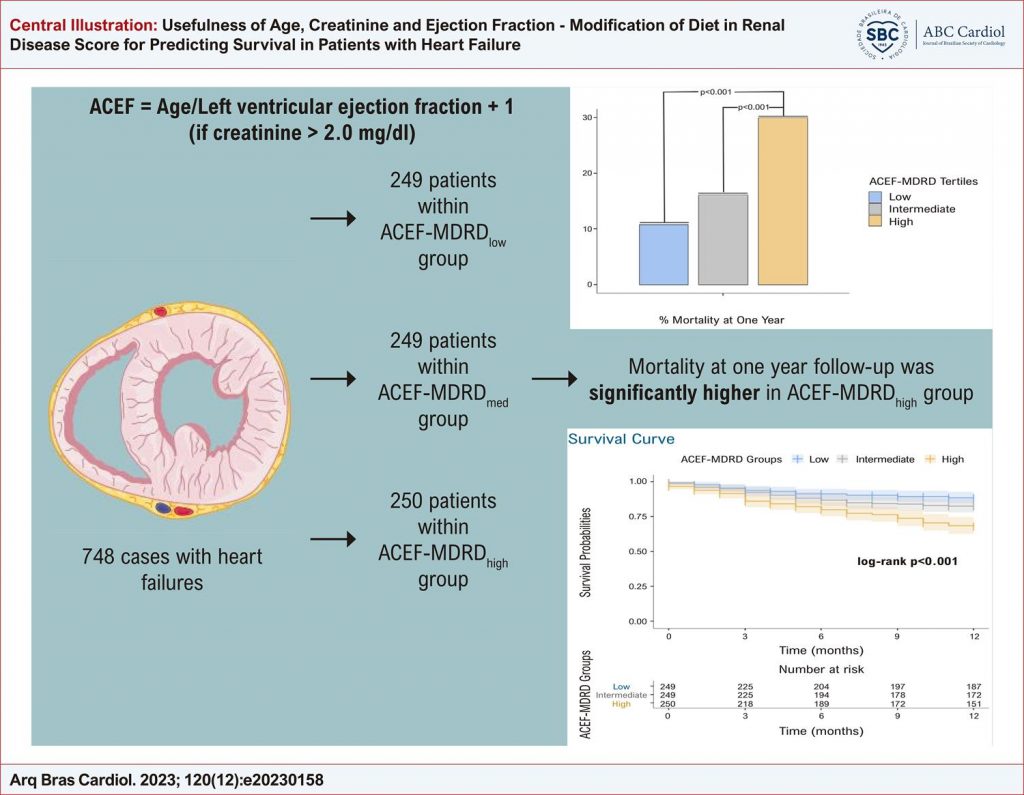Arq. Bras. Cardiol. 2023; 120(12): e20230158
Usefulness of Age, Creatinine and Ejection Fraction – Modification of Diet in Renal Disease Score for Predicting Survival in Patients with Heart Failure
Abstract
Background
While many risk models have been developed to predict prognosis in heart failure (HF), these models are rarely useful for the clinical practitioner as they include multiple variables that might be time-consuming to obtain, they are usually difficult to calculate, and they may suffer from statistical overfitting.
Objectives
To investigate whether a simpler model, namely the ACEF-MDRD score, could be used for predicting one-year mortality in HF patients.
Methods
748 cases within the SELFIE-HF registry had complete data to calculate the ACEF-MDRD score. Patients were grouped into tertiles for analyses. For all tests, a p-value <0.05 was accepted as significant.
Results
Significantly more patients within the ACEF-MDRD high tertile (30.0%) died within one year, as compared to other tertiles (10.8% and 16.1%, respectively, for ACEF-MDRD low and ACEF-MDRD med , p<0.001 for both comparisons). There was a stepwise decrease in one-year survival as the ACEF-MDRD score increased (log-rank p<0.001). ACEF-MDRD was an independent predictor of survival after adjusting for other variables (OR: 1.14, 95%CI:1.04 – 1.24, p=0.006). ACEF-MDRD score offered similar accuracy to the GWTG-HF score for predicting one-year mortality (p=0.14).
Conclusions
ACEF-MDRD is a predictor of mortality in patients with HF, and its usefulness is comparable to similar yet more complicated models.
Keywords: Heart failure; Mortality; Survivorship
731

